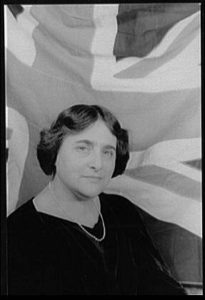Thank you, Myra Hess
 This well-worn score has been with me since I was a teen-ager in Texas. My teacher, Hurshelene Journey-McCarty, assigned it to help bolster my skill in projecting a melody over an accompaniment. She knew I already loved the music of Bach, but this piece was very different from the Preludes and Inventions I had learned. British pianist Myra Hess took one of Bach’s very complicated chorales and arranged it so that one person could play it on one piano. Thus, the Chorale from the sixth section of Bach’s Cantata No. 147, written for many singers and instrumentalists, was now accessible as a piano solo . I’ve played it so often that my fingers find the notes on their own, but I’m still trying to project the melody with the artistry Bach and Hess deserve.
This well-worn score has been with me since I was a teen-ager in Texas. My teacher, Hurshelene Journey-McCarty, assigned it to help bolster my skill in projecting a melody over an accompaniment. She knew I already loved the music of Bach, but this piece was very different from the Preludes and Inventions I had learned. British pianist Myra Hess took one of Bach’s very complicated chorales and arranged it so that one person could play it on one piano. Thus, the Chorale from the sixth section of Bach’s Cantata No. 147, written for many singers and instrumentalists, was now accessible as a piano solo . I’ve played it so often that my fingers find the notes on their own, but I’m still trying to project the melody with the artistry Bach and Hess deserve.
This piece has guided me through many challenges: math and history exams, moving from Texas to the East Coast, my father’s death. Even when I didn’t have a piano close by, I could play it in my mind. In 1971, I got my own piano. Jesu, Joy became my go-to piece when my young children were down for their naps, when Steve was away on business, when my mother died, when my brother Harry died of AIDS, and whenever I had doubts about my faith in God. Thank you, Myra Hess, for creating a score that allowed me to access Bach’s great work and find fresh meaning to my life. In 2001 my brother Joel and I took a tour of Germany in the Footsteps of Bach. Bach’s music, always inscribed Soli Deo Gloria (to the Glory of God Alone), continues to provide comfort and inspiration.
Here’s a grand performance of the original chorale by the Mormon Tabernacle Choir:
And here is my recording of Jesu, Joy made in May 2020 during my COVID isolation:
In 1989, the year my mother died, I played Jesu Joy in her memory on my studio recital. That was when I first realized that the part I must project is just five different notes–G-A-B-C-D. I found it interesting that Beethoven’s tune for the “Ode to Joy” Chorale in his Ninth Symphony is also just five notes–D-E-F#-G-A. Both composers employed only five notes to express divine joy! Today at First Presbyterian Church of Delray Beach, we sang the hymn “Joyful, Joyful, We Adore Thee” based on Beethoven’s famous 5-note melody.
Bach took his 5-note melody from a hymn tune written by Johann Schop in 1642, “Werde munter, mein Gemüte,” He harmonized this melody in the key of G, transposing it twice for contrast. The English text below is attributed to the poet laureate Robert Bridges. His is not a translation of the stanzas used in Bach’s original version; he was inspired by stanzas of another hymn written in 1661 by Martin Janus, “Jesu, meiner Seelen Wonne.”
Jesu, joy of man’s desiring,
Holy wisdom, love most bright;
Drawn by Thee, our souls aspiring
Soar to uncreated light.Word of God, our flesh that fashioned,
With the fire of life impassioned,
Striving still to truth unknown,
Soaring, dying round Thy throne.

On YouTube you can find a 1940 recording of Myra Hess performing her own arrangement of Jesu Joy, that she wrote in 1926. Hess, a British pianist who lived in London from 1890 – 1965, became famous during the Second World War when, with all concert halls blacked out at night to avoid being targeted by German bombers, she organized daily lunchtime concerts, starting during The Blitz. The concerts were held at the National Gallery, in Trafalgar Square. They were presented Monday to Friday, for six-and-a-half years without fail. Myra gave the first one on 10 October 1939 and a queue of 1,000 formed to hear her (the Home Office had given permission for an audience of just 200). She played a program of composers to whom she was closest: Scarlatti, Bach, Beethoven, Schubert, and Brahms
Designed to lift the morale of the general public living through the privations of war, the National Gallery Concerts charged one shilling admission; profits went to the Musicians’ Benevolent Fund. Each artist, regardless of age or fame, was paid the same fee of five guineas. Myra’s aim was to present first-rate chamber music at an affordable price as well as giving up-and-coming young musicians the opportunity to perform with established artists. At one memorable concert on New Year’s Day 1940, nine well-known pianists played musical chairs in Schumann’s Carnaval, followed by Haydn’s ‘Toy’ Symphony conducted by Sir Kenneth Clark, with Elena Gerhardt (toy drum), Benno Moiseiwitsch (triangle) and Irene Scharrer and Myra Hess (cuckoos). Here is a recent 6-minute video from Wigmore Hall that recalls the concerts at the National Gallery:
The National Gallery Concerts continued until April 1946, a total of 1,698 in all. Hess played at 146 of them. For this contribution to maintaining the morale of the populace of London, King George VI named her a Dame Commander of the Order of the British Empire in 1941. Thank you, Myra Hess, for your service to Bach, to British musicians, to the people of London, and to the whole world.
Leave a Reply